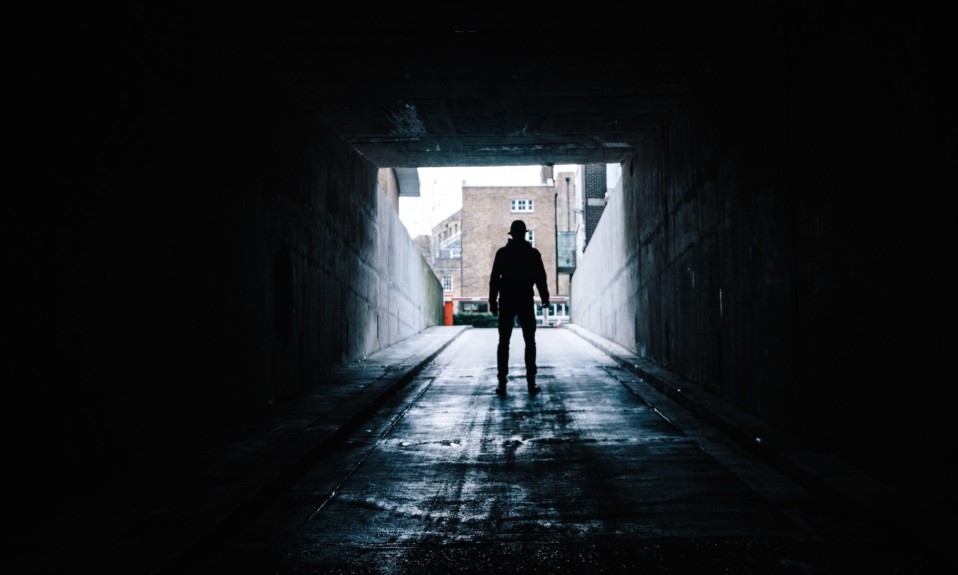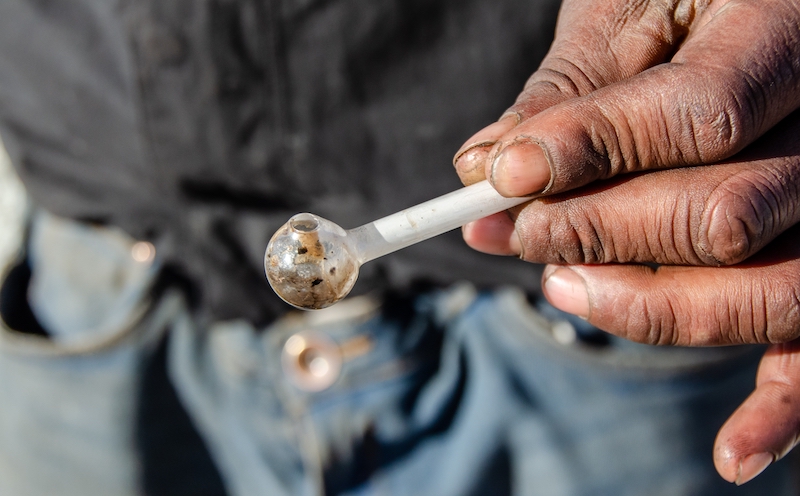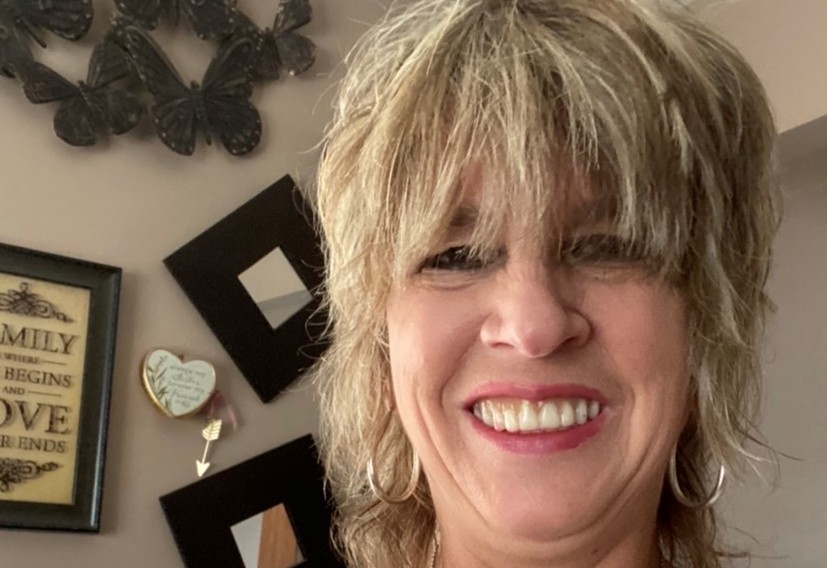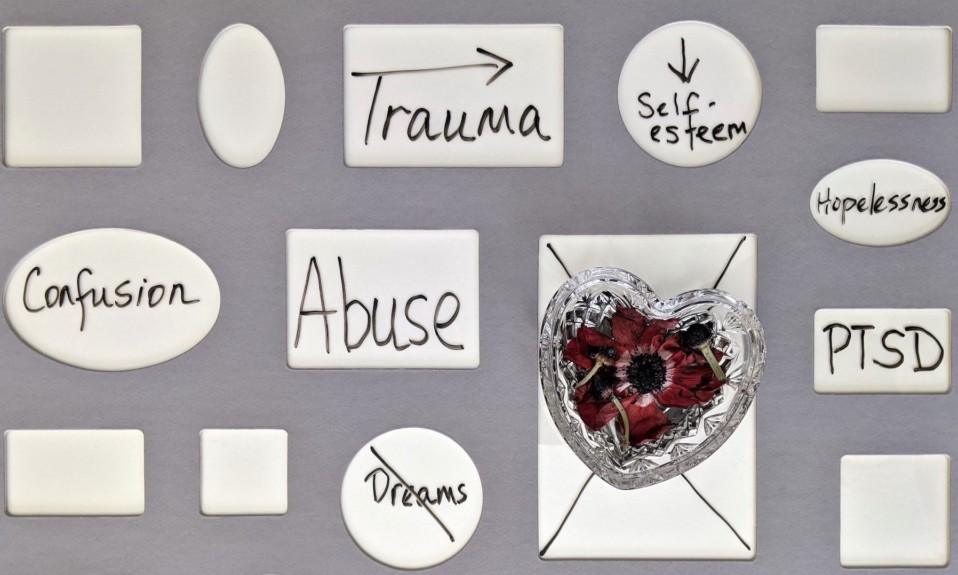Kevin details how he fell into, as he puts it, “a sea of unforgettable darkness”
This is the first installment in a two-part series. Look for the next part in the coming days.
I awake into a sea of unforgettable darkness. Faintly in the distance, I can hear my mother sobbing and pleading, “Please Kevin! Come on Kevin!” I take the deepest of gasps of air, and my eyes slam open. Opening eyes, I see that I’m being cradled by my mother, with my sister standing behind her with tears streaming down her face. With my growing consciousness comes a growing headache. I reach up to my forehead to find a brand-new lump, tender to the touch. I’m not sure what time it is, but I know it’s late at night.
Moments before, I was laying in my mom’s oversized armchair watching “Boys Don’t Cry.” My current allotment of Xanax had just run out, and I remembered feeling the last dose wearing off. My heart had started racing and I had become fidgety. I knew if I went to bed, I was not going to be able to close my eyes, let alone get any rest. My hope had been to stay up and hope I could make it to my doctor appointment in the morning. I did not. Instead, a cop and a paramedic were now walking into the front door of my mom’s split-level ranch.
The cop stayed behind while he ran to the ambulance and grabbed oxygen. In his absence, I stared at the door waiting desperately for him to walk back in and make the gasping stop.
This was the most relieved I had ever been to see the police. As they came up the stairs, I realized I was still gasping for air. I nearly fell off the chair my mom and my sister had hoisted me back on to. The paramedic caught me, and I told him “I can’t breathe.” The cop stayed behind while he ran to the ambulance and grabbed oxygen. In his absence, I stared at the door waiting desperately for him to walk back in and make the gasping stop.
As he put the mask over my face, I began to relax and started questioning what the hell had happened. I reached for the bump on my head again, realizing that I must have fallen off the chair, and in the process slamming my head into the stairs’ wrought iron. But why? Why did I fall off the chair? Why couldn’t I remember what happened? So, I asked, “What happened to me?” The paramedic responded “We think you had a seizure. Do you have a history of epilepsy?” “No?” I responded. “Does anyone in your family?” he asked, not just looking at me but also my dazed and confused family. “No, not that we know of,” they responded. “Well, we’ll take him in and get him checked out.” With that, I was hauled into the back of the ambulance, clutching tightly at the mask while still feeling deprived of oxygen, and rode my way into the local hospital.
What Happened?
It had been nearly six months since I had my first panic attack, and for the last two of those, I had been drinking from morning to night. The only time I could abstain was when I had some kind of benzodiazepine (aka “benzos”). What’s a “benzo” you ask? It’s a tranquilizer. Xanax, Ativan, Valium, Librium, Restoril, Ambien. All benzos. And the only time I felt “normal,” for lack of a better word, was when I had some in my system. This had been going on since May of 2000.
Since August of 1997, I had been a “student” (also for lack of a better word) at the Indiana University of Pennsylvania (IUP). That fall, I had joined a fraternity and since the fall of 1999, I had been living in “the house.” Since the turn of the year (well actually millennium) I had been hanging out with a group of people outside of the fraternity almost every day. When we got together, we would snort lines of benzos mixed with Ritalin. Why? Not sure. Because I really didn’t care about those lines. I liked drinking, but a need to feel a sense of belonging and (of course) a sexual attraction to a member of that group led me to go along with it all. Then, that May during finals week, we had one last “banger,” and they all left for home.
I had decided enough was enough. At the time, I was not taking any classes and was working two jobs, just to afford living in said house. There was no future path, and after talks with friends, family, and fraters, I knew I needed a change. Since this group of friends were taking off, I saw it as an opportunity to make that change. A couple days after the banger, I took some of the money I had saved up and went to the mall with a couple of my brothers. The hope had been to spend some money on clothes, treating myself to a small indulgence before attempting to go back to classes. However, that day, the world turned grey.
For the next few months, I tried to live normally. I still drank, but no pills. I went to my food service job, but once a shift I would have to bolt into the walk-in refrigerator and cool down from my anxiety.
As we drove down to Monroeville Mall, made famous by George Romero’s “Day of the Dead,” I started to feel tingling in my left arm. Then, my chest tightened, and my stomach churned. I could feel my heart racing and sweat beading on my forehead. I pleaded for them to stop the car, and they obliged. I popped out and paced back and forth for five minutes, going back and forth between thinking I was going to vomit and thinking I was going to pass out. But the symptoms went down, but the world itself…lost color. Something had changed, and I did not know yet what it was.
For the next few months, I tried to live normally. I still drank, but no pills. I went to my food service job, but once a shift I would have to bolt into the walk-in refrigerator and cool down from my anxiety. And it kept getting worse. Eventually, I was so desperate (and stupid) that I was willing to try anything to help calm me down. One night, someone offered me cocaine, and I obliged. Which meant the next day the anxiety shot through the roof worse than ever before. I was taken to the hospital and standing in the triage at the ER felt like hours as my heart pounded in my chest as if it was seeking freedom. I did survive long enough for them to take me back and hand me two little pills. 20 minutes after them, I was “normal” for the first time since May. This was now August.
I was given a script of Xanax and sent on my way. I went home to report back to my family on what happened, and as was usual in those days, I was able to get my hands on a large “sample pack” of the drug. For the first couple days, everything started to settle down. But soon, I noticed they weren’t working as well as they had in the beginning. I was taking four at a time and still not getting the full effect. That’s when I realized alcohol actually helped the symptoms. While alcohol never returned me to homeostasis, I was able to at least calm down while drinking. So as the pills ran down, the drinking went up.
Gradually they ran out, and before I was able to get any more, I fell into a spiral of drinking from morning to night. Each time I woke up, I would need to chug 4-6 drinks to knock the symptoms down to a controllable level. Looking back on this, it’s understandable what happened to me. At the time though, I had no idea. I still wasn’t adding up the math. Eventually I did get an additional script after a pro bono visit to a PCP for what I believed was an “anxiety disorder.” Of course, those ran out quickly, and I began drinking all-day, every day, for a month.
Near the end of the month, my sister asked if she could come up with her friend to party. I knew right away that I was going to have to tell her, and hope that she would help me. By now, I had concluded that I was an alcoholic. That was the only thing I knew of that matched what I was going through. Yet, as I just said, alcohol never “solved” the physiological problem (tuck that away for later). When my sister arrived, we hung out for a while before I then broke down and told her. We called my mom, and she drove me home the next day.
At that point in time, I never wanted to drink again. I never felt “good” when I was drinking. It was as if I was using it only to hold back a demon, but it could never soothe it. So, I was ready to do whatever to learn what happened, why it happened, and to never let it happen again.
When I got home, I came clean what was happening. This was in between stealing booze from here, there, and everywhere to try and keep my sanity. I remember ironically that it was in that same oversized chair that I first explained what had been happening, while my shoulders and neck twitched uncontrollably. As I was so visibly shaky, I was offered some Xanax, and wouldn’t you know it I was “normal” again for the first time since August. Which brings us back to me, sitting in the ambulance, in the way to the hospital.
Why Did This Happen?
In the hospital, I received every test they could think of. CAT scan, EEG, X-ray, motor-function. All passed. I also started to tell them that I thought I was an alcoholic. As they had nothing else to explain what happened, they agreed. A social worker came to my room, with my divorced parents in tow (a sight to see, I tell you) and explained that I needed to go to treatment. “Duh,” I thought to myself. At that point in time, I never wanted to drink again. I never felt “good” when I was drinking. It was as if I was using it only to hold back a demon, but it could never soothe it. So, I was ready to do whatever to learn what happened, why it happened, and to never let it happen again.
I signed the papers, and my dad signed on to pay. My mom packed me a bag, and they drove me directly to an addiction treatment center in Washington, PA. Before they fully admitted me, I was informed that the Ativan my PCP prescribed would not be administered. Immediately I panicked. You see, I had come to believe that there was something wrong with me, physiologically and psychologically. In my mind, my anxiety was a medical issue, and I had no evidence that I could exist without those meds. Strangely, until that moment, I had never had a “craving” or any kind of psychological connection to them. This feeling was a precursor of what I was to learn.
The “disease” of addiction was the second item that struck me. How my rat brain drove cravings for my drug of choice. How I had a gene (which they can never seem to find) that made me predisposed to being the alcoholic.
Two things really affected me as I settled into my new environment. First, until that point in time, I had never read the 12-steps of Alcoholics Anonymous. God? Higher Power? Character Defects? Prayer?! I had watched some afterschool specials, so I knew of AA, but it had always been described as a scientific process. Maybe like baking a cake. Do certain things in order, and you will be better. This? This was a religious transformation, all about belief and faith. It didn’t really make sense. Especially with what I was learning about the “disease” of addiction. Yet, as I said, I was open to anything at this point.
The “disease” of addiction was the second item that struck me. How my rat brain drove cravings for my drug of choice. How I had a gene (which they can never seem to find) that made me predisposed to being the alcoholic. How we “chosen few” are not able to control ourselves. As I’ve stated in this series before, according to the treatment center it was a chronic and progressive brain disease, leaving the sufferer in a state of Otherness. Someone psychologically incapable of helping themselves from seeking out their “drug of choice” without some higher power “assisting” them. And this is where it got weird for me.
In the beginning, I was accepting of the stigma placed upon me. I thought, as long as they would explain why I had a seizure and give me to the tools to stop it from happening again, I would be anything they wanted me to be. But then someone came to speak that monkey-wrenched the whole thing.
When you go to rehab, they usually bring in a pharmacist to talk with the group. From them, I learned that it is almost unheard of for someone my age (21) to have a seizure from alcohol withdrawal. However, benzodiazepines can easily cause that severe of withdrawal in someone so young. Especially if you abruptly quit them. It was in this moment I realized what had happened. It was the benzos. Not only had I abruptly quit them, but I had done so three times in six months.
I found a counselor I trusted and asked to speak with them. I relayed the story of what happened. For the entire semester of Spring 2000, I had been inadvertently building up a tolerance and physiological dependence to benzos. That May, I had abruptly quit those, but since I was still drinking, the withdrawal I experienced on the way to the mall kept growing, unbeknownst to me. I thought I had developed some medical condition called “anxiety.”
After I got the script at the hospital, my tolerance shot up. It took four to six pills to have any effect. Which meant I ran right through the “sample pack” of 100 or so in a matter of weeks. Which led to me abruptly quitting again. As for the next bottle of benzos? It was actually stolen out of my room during a party, but that bottle would only have held off the inevitable for a couple weeks. After my sister took me home, I was given about 10 pills found by my family. After those ran out, I found myself sitting in that big armchair watching “Boys Don’t Cry,” and my brain finally gave out.
I told him all this, and that I believed I wasn’t an alcoholic. That it hadn’t caused the seizure. That I was actually an addict. To me this was a massive epiphany. To me, it changed everything. The counselor looked at me and said, “You don’t understand. You’re still an alcoholic.” I remember confusedly mumbling, “what?”
My self-diagnosis as an alcoholic had everything to do with those physical symptoms. While I drank a lot, by the time I entered rehab I didn’t want to drink, because I had forced so much booze down my throat to manage the benzo withdrawal. Therefore, I had neither psychological cravings for alcohol, nor had it caused my seizure. How could I still be an alcoholic?
This post originally appeared in Mad in America. It is reposted here with permission from Mad in America and the author.
Photo: David East













